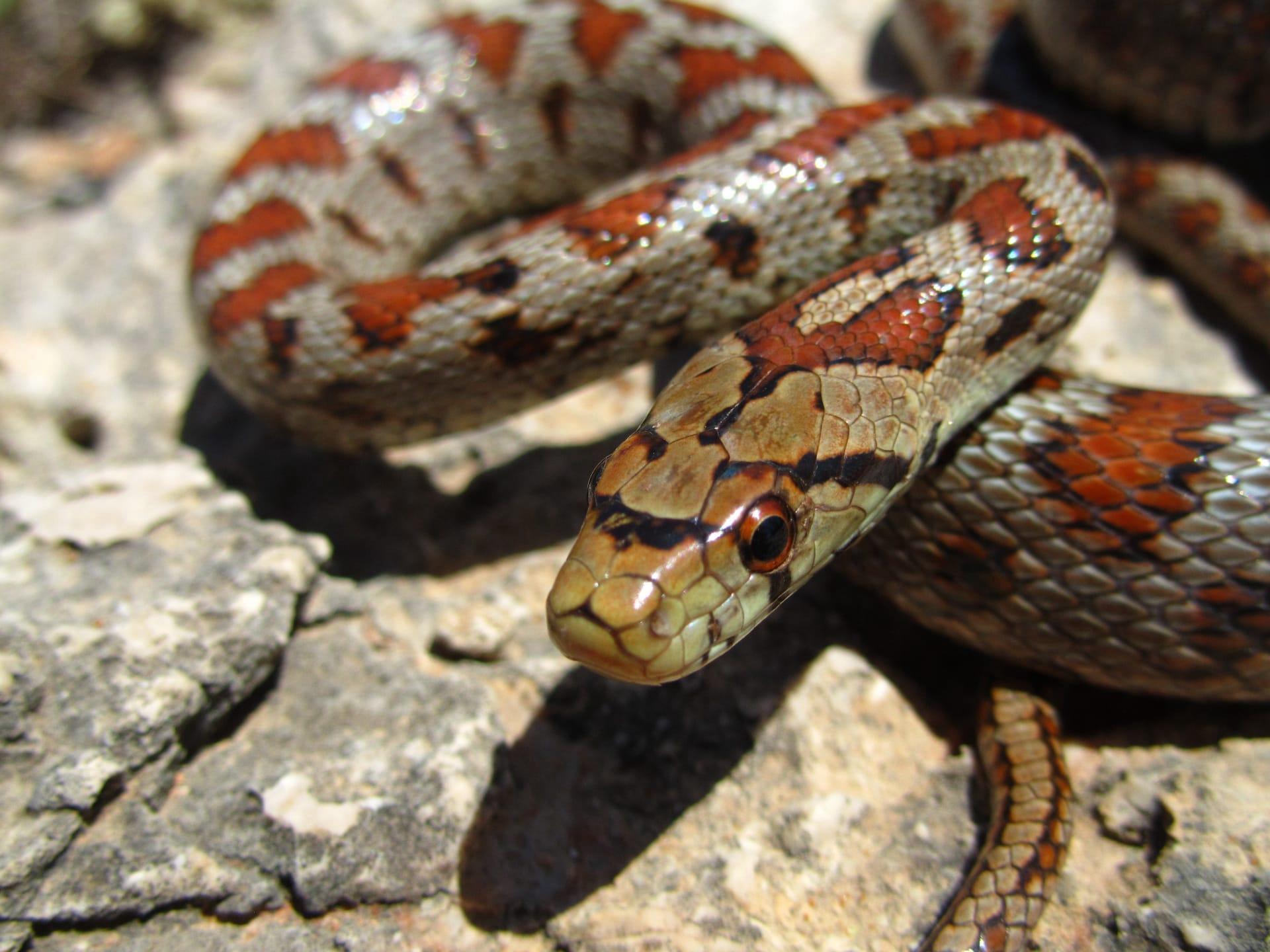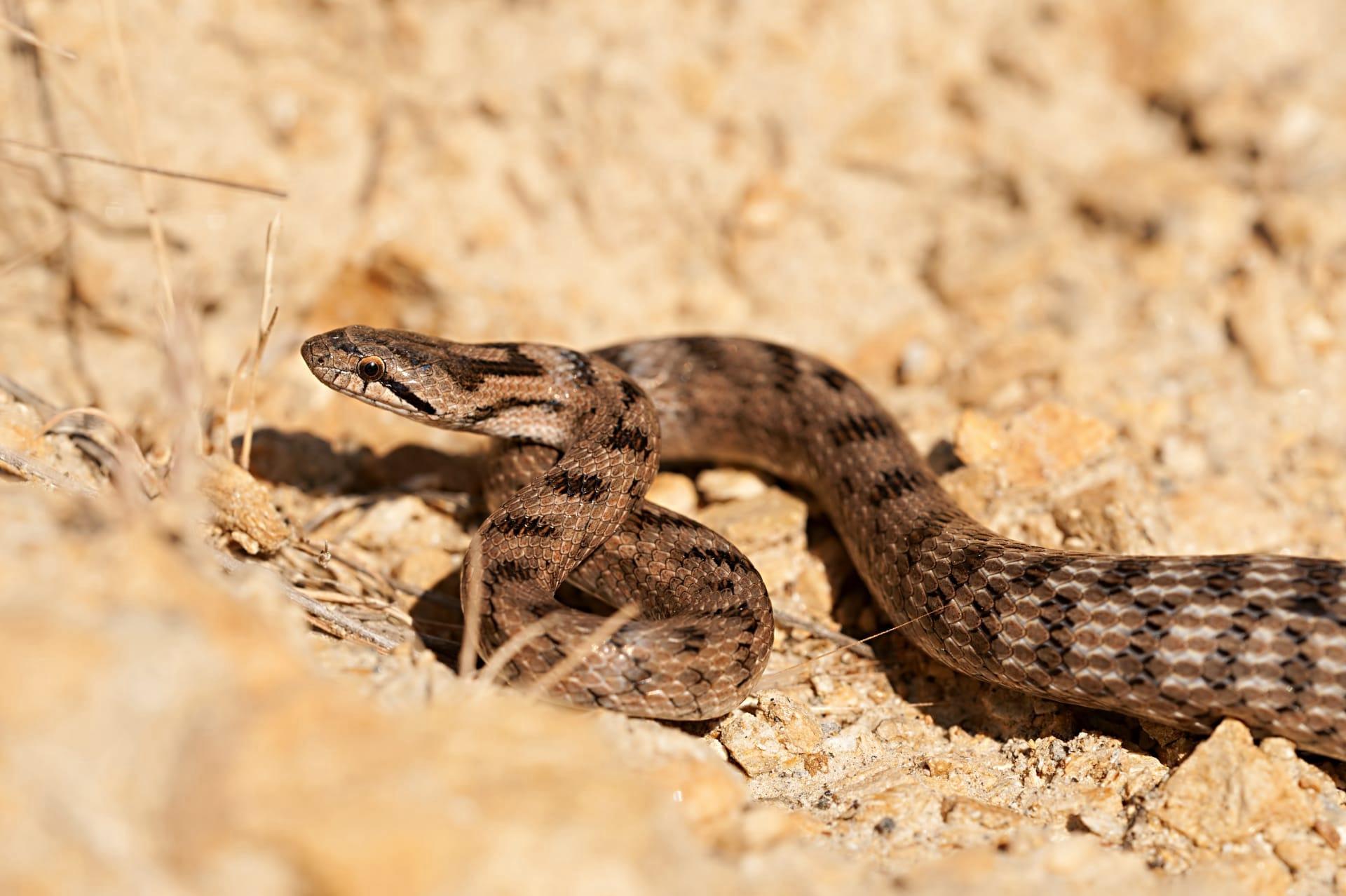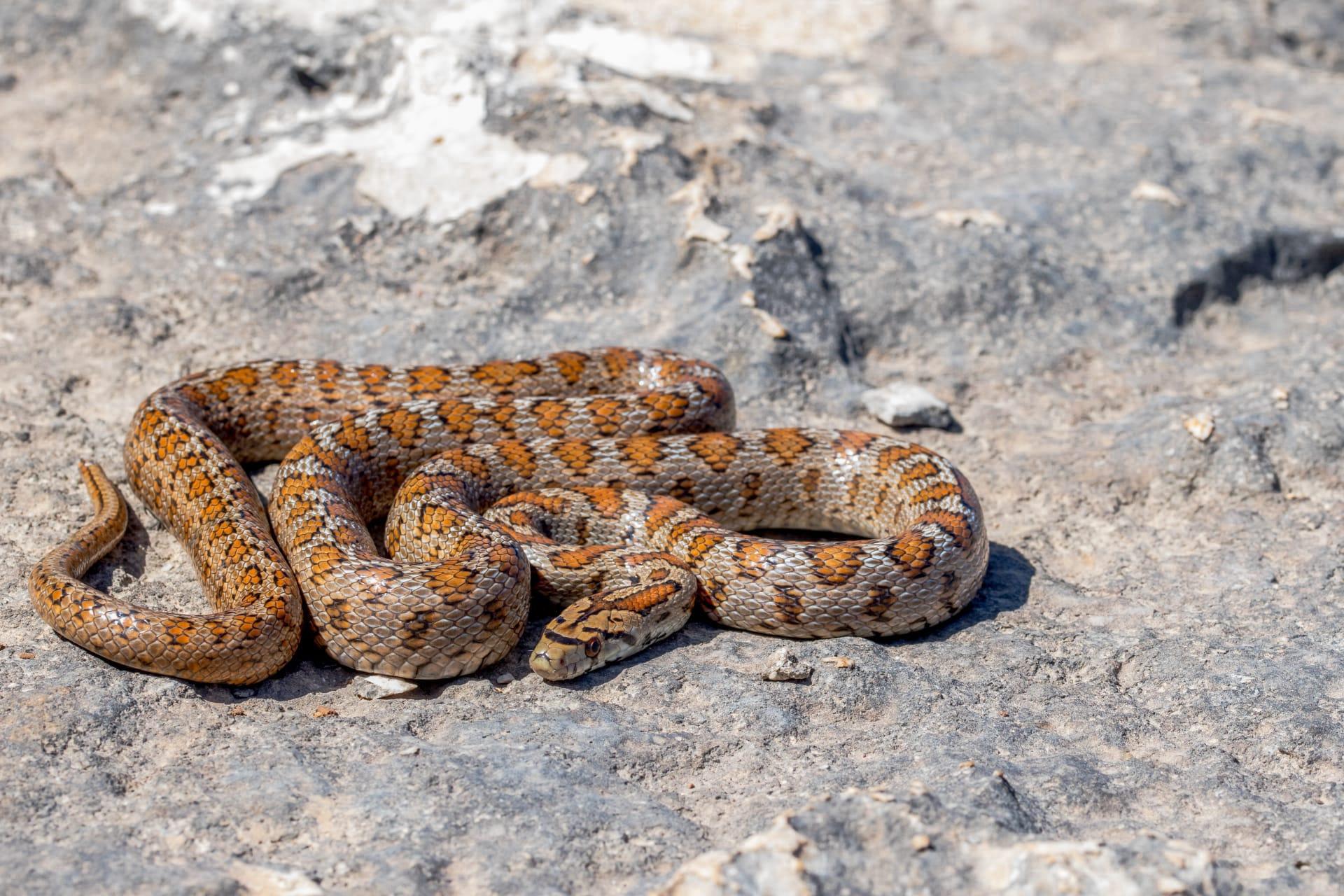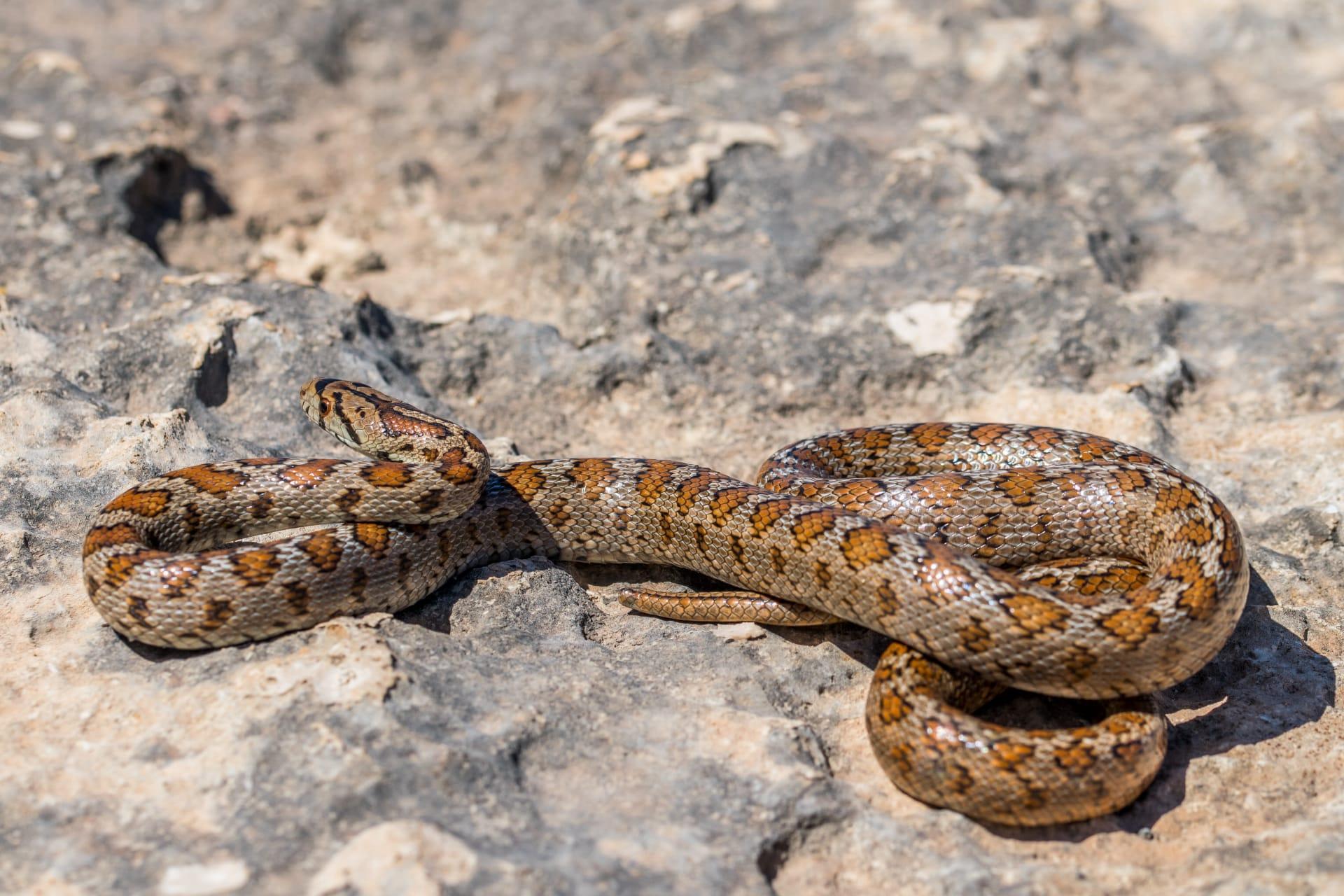Gopher Snake Trivia
- Home /
- Trivia Question /
- Animal /
- Gopher Snake Trivia
1
Question: What distinguishes a Gopher Snake's appearance from other snakes?
Answer: Gopher Snakes, scientifically known as Pituophis catenifer, are notable for their distinct color pattern. They typically feature a combination of tan, brown, and yellow hues with dark brown or black splotches along their backs. These snakes can grow impressively long, often reaching lengths of up to 7 feet (about 2.1 meters), though the average is around 4 to 5 feet (1.2 to 1.5 meters). Their girthy, robust body structure and keeled scales, which have a raised ridge in the center, also set them apart.
Question: How does the Gopher Snake behave in the wild?
Answer: Gopher Snakes are known for their interesting defensive tactics. When threatened, they often imitate rattlesnakes by coiling their bodies, hissing loudly, and vibrating their tails in dry grass, mimicking the rattling sound. This behavior can be quite convincing, even though they are non-venomous. In the wild, they are primarily active during the day (diurnal) but can become nocturnal in hot weather. They are adept climbers and burrowers, often found in a variety of habitats like grasslands, forests, farmlands, and deserts.

2
Question: Is it true that Gopher Snakes are venomous?
Answer: No, this is a common misconception. Gopher Snakes are non-venomous. They subdue their prey through constriction, using their strong bodies to wrap around and squeeze their prey, typically small mammals like gophers (hence the name), birds, and eggs. Their bite, while potentially painful, is not poisonous to humans or larger animals.
Question: Do Gopher Snakes lay eggs or give live birth?
Answer: Gopher Snakes lay eggs, unlike some other snake species that give live birth. A female Gopher Snake typically lays between 2 to 24 eggs in a clutch, with the average being around 12. The eggs are deposited in a warm, moist location like a burrow or under rotting vegetation and hatch after approximately 65 to 75 days. The hatchlings are independent from birth, measuring about 12 to 18 inches (30 to 45 centimeters) long.

3
Question: What is the lifespan of a Gopher Snake in the wild?
Answer: Gopher Snakes can have a relatively long lifespan in the wild. On average, they live for about 12 to 15 years, but they can survive up to 20 years in ideal conditions. Their survival depends on factors like habitat, availability of food, and predation pressures. In captivity, with controlled environments and regular feeding, they may live even longer.
Question: How do Gopher Snakes hunt and what is their diet?
Answer: Gopher Snakes are skilled hunters, primarily preying on small mammals like gophers, moles, rabbits, and voles. They also consume birds and their eggs. These snakes use their keen sense of smell to locate prey. Once they find their target, they quickly strike and then constrict it. Their diet plays a crucial role in controlling rodent populations in their ecosystems, making them valuable for natural pest control.

4
Question: Can Gopher Snakes climb trees?
Answer: Yes, Gopher Snakes are quite adept at climbing. They use their strong muscular body and specialized belly scales to grip and ascend trees. This ability allows them to access bird nests for eggs and fledglings, expanding their dietary options. However, they spend most of their time on the ground and are also efficient burrowers.
Question: How do Gopher Snakes adapt to different climates and environments?
Answer: Gopher Snakes are highly adaptable and can thrive in various environments, from arid deserts to grasslands and even forested areas. They regulate their body temperature through behavior, basking in the sun to warm up and seeking shade or burrows to cool down. During extreme cold or hot periods, they may go into brumation or estivation, states of dormancy that help them conserve energy.

5
Question: Are Gopher Snakes solitary or social animals?
Answer: Gopher Snakes are primarily solitary creatures. They come together only during the mating season, which occurs in the spring. Outside of mating, they prefer to hunt and live alone. This solitary nature is typical of most snake species, as it reduces competition for resources.
Question: How do Gopher Snakes communicate with each other or perceive their environment?
Answer: Gopher Snakes, like other snakes, rely on a range of sensory abilities to perceive their environment. They use their tongue to 'taste' the air for chemical cues, aiding in locating prey or mates. They also have sensitive bodies that can detect vibrations in the ground, helping them sense approaching predators or prey. For communication, especially during mating season, they use body language and pheromones rather than vocal sounds.